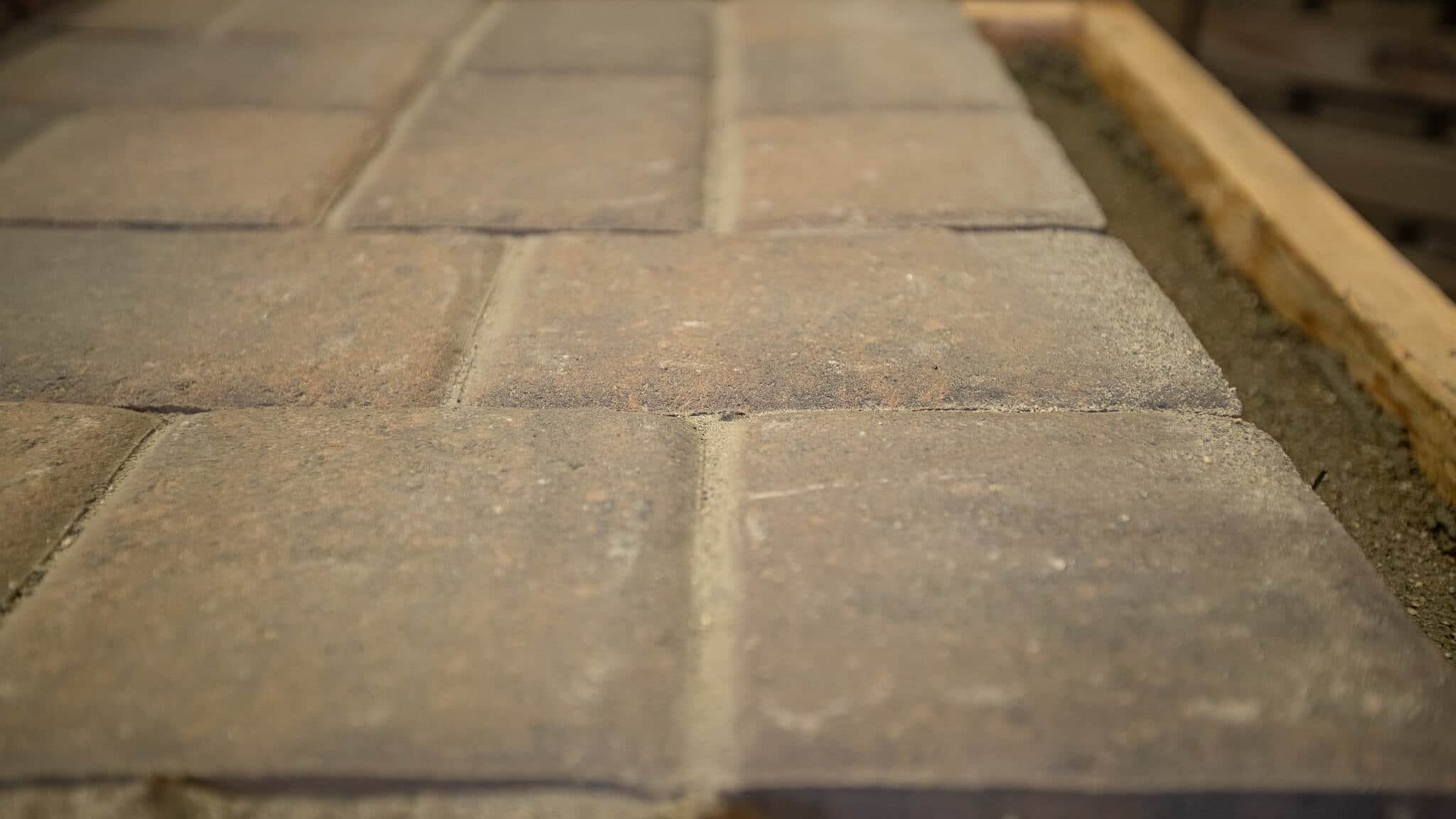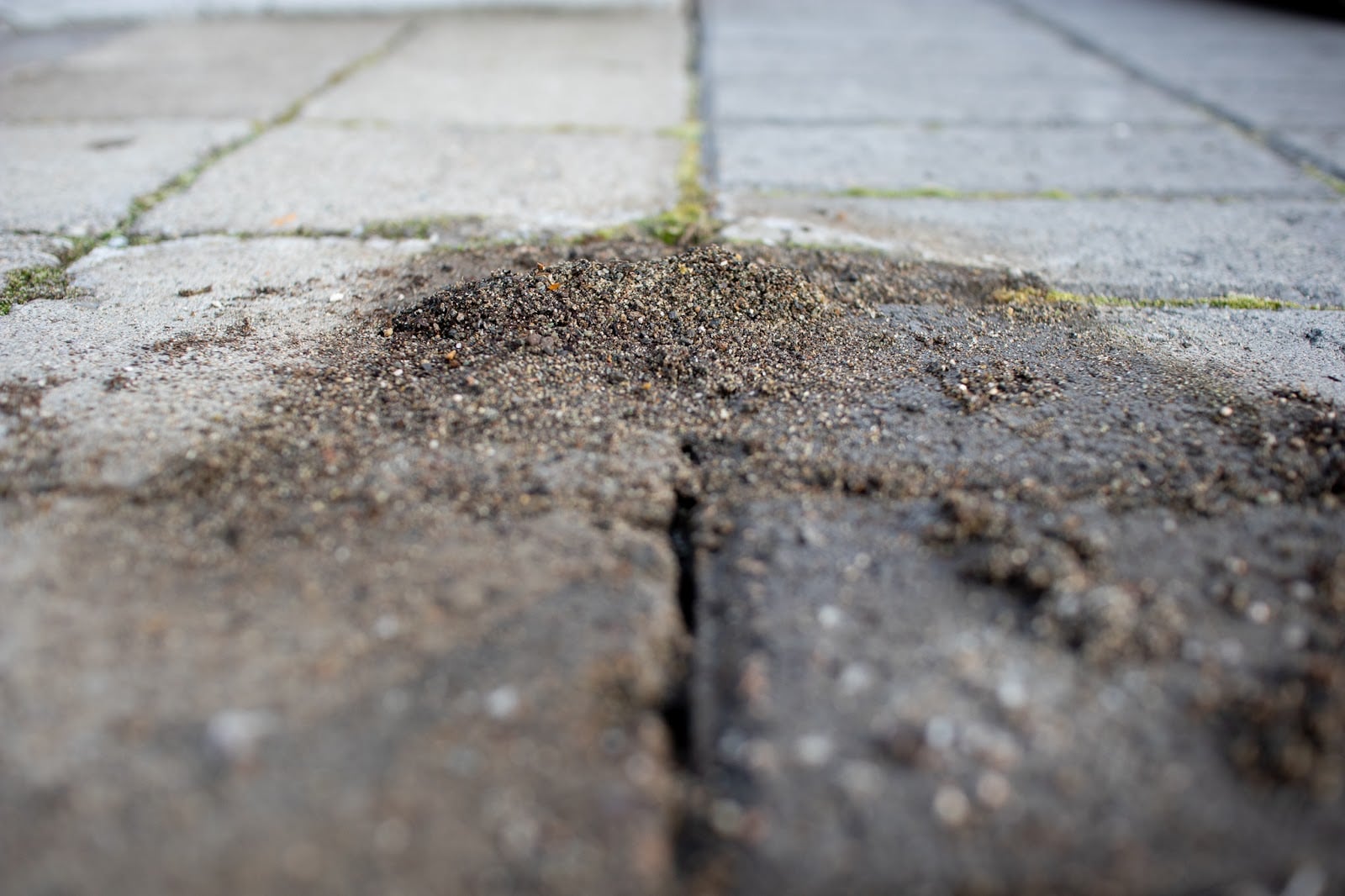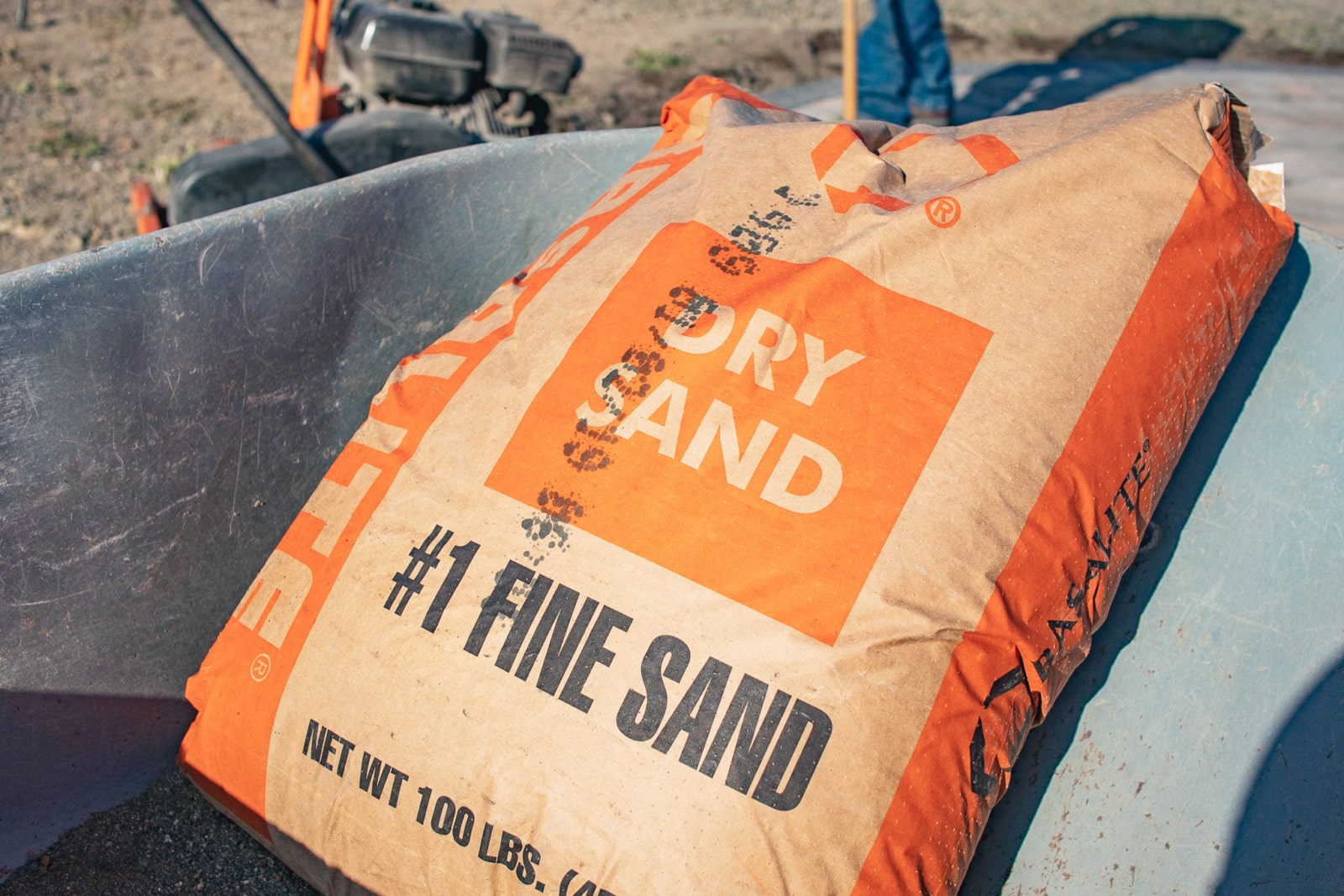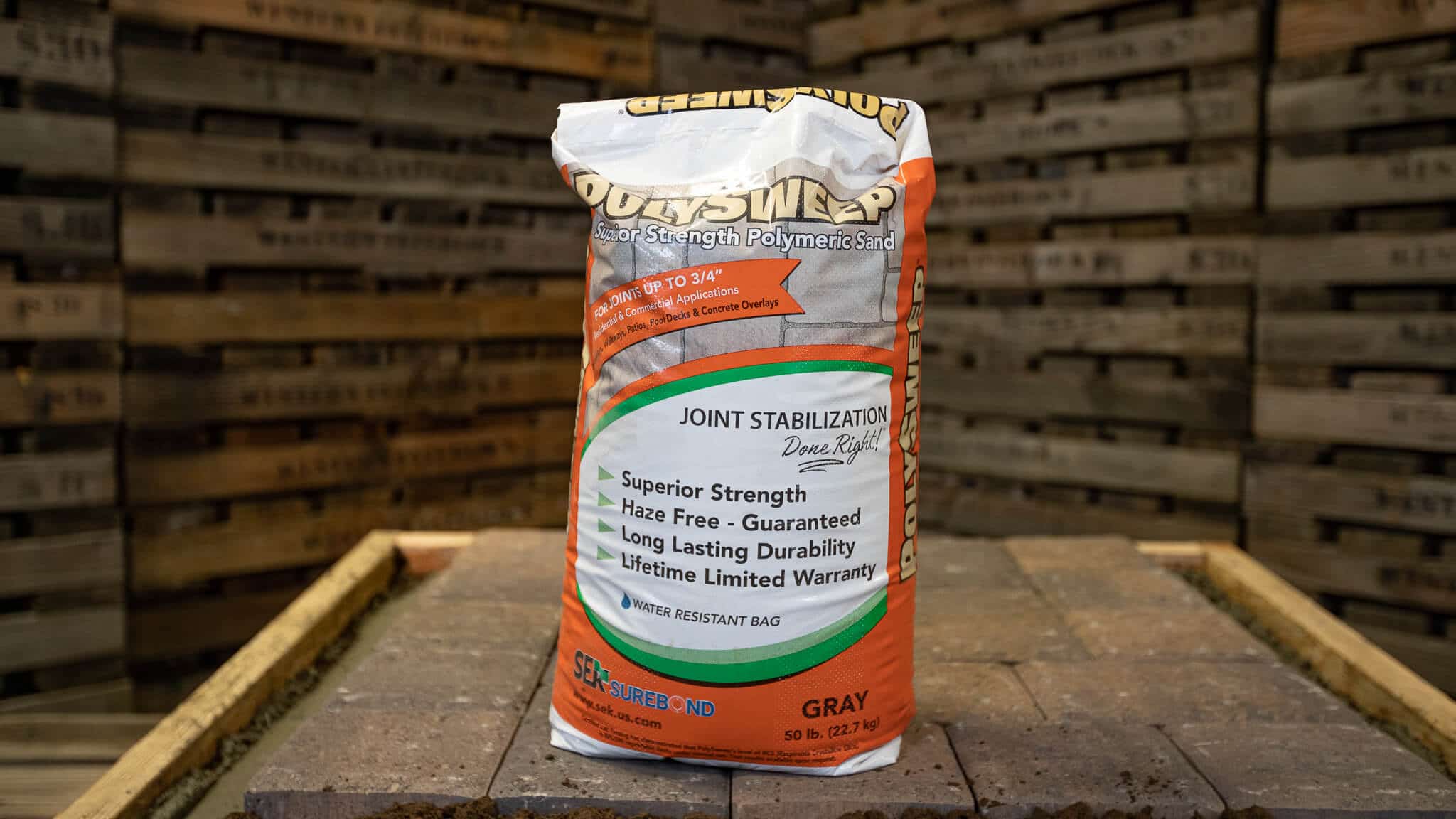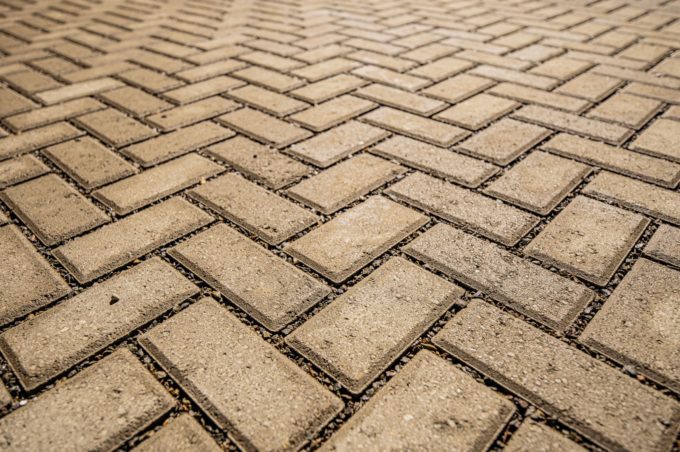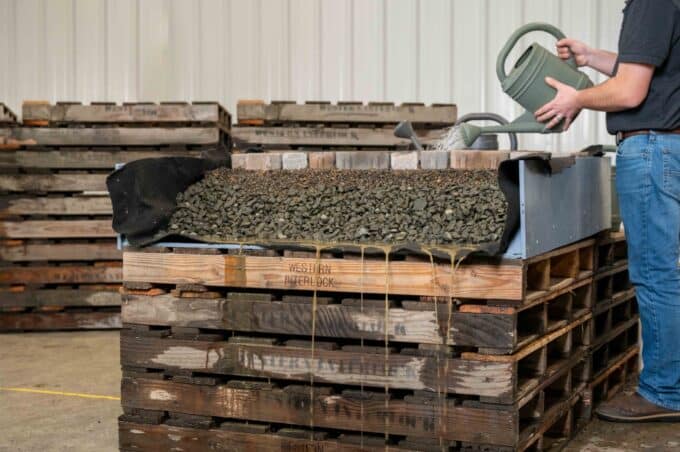Get our FREE Project Planning Guide
"*" indicates required fields
Maybe you are nearly finished with your new patio, but know that one of the last recommended steps is installing sand in between the joints of the stones to lock the pavers together. Why do you need to do this? And should you use fine dry sweeping sand or polymeric sand? Let’s take a look.
You may be wondering, “Are there good reasons I should apply sand to my paver joints? Will it have legitimate long-term benefits?”
There are many good reasons you should apply sand to your paver joints. Not to mention, installing sand in the joints is strongly recommended by the Interlocking Concrete Pavement Institute (ICPI).
They know from experience that sand in between your paving stones is an important preventative—it is the primary way to keep moss and weeds from growing in between the paver joints. Another benefit to sand-swept in between the pavers is that it will be a deciding factor in keeping the hardscape from shifting over time.
Two types of sand
The two main types of sand that are used between paver joints are fine dry sweeping sand and polymeric sand. They are both frequently implemented but do their best work in different types of projects.
Fine dry sweeping sand
Fine dry sweeping sand is an especially fine sand that is used in between paver joints. This type of sand is easy to install by yourself and is the least expensive of the two options for filling in your paver joints.
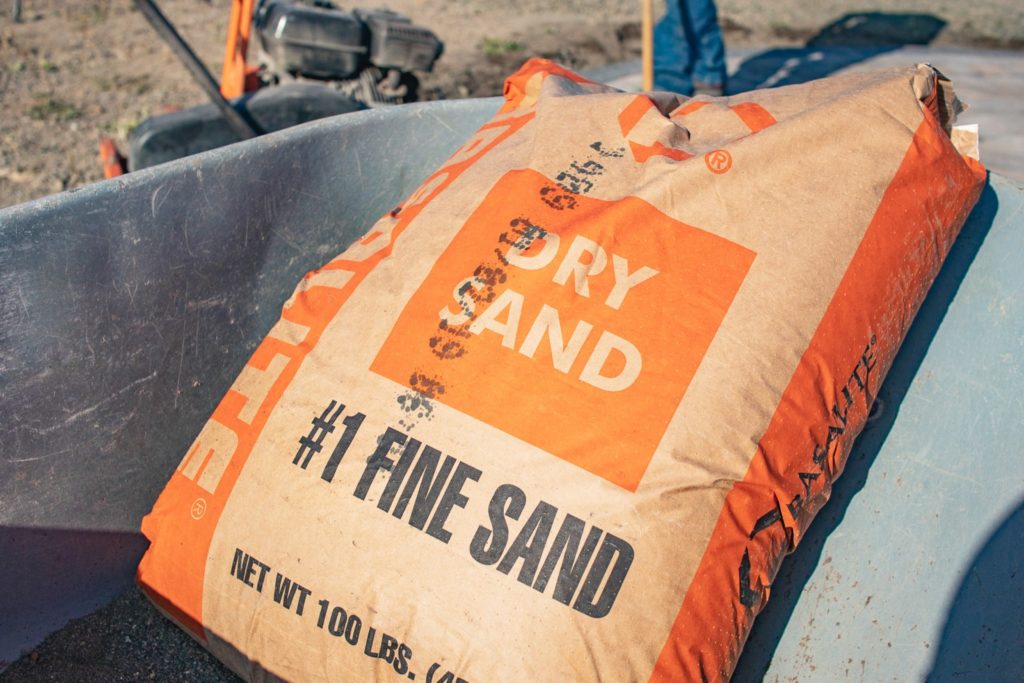
Polymeric sand
Polymeric sand is a mix of different fine sands and other additives. When it is combined with water it creates a strong bond that is ideal for filling in joints in pavers. The ICPI endorses the use of polymeric sand. It is more flexible than fine dry sweeping sand but should not be used in driveways.
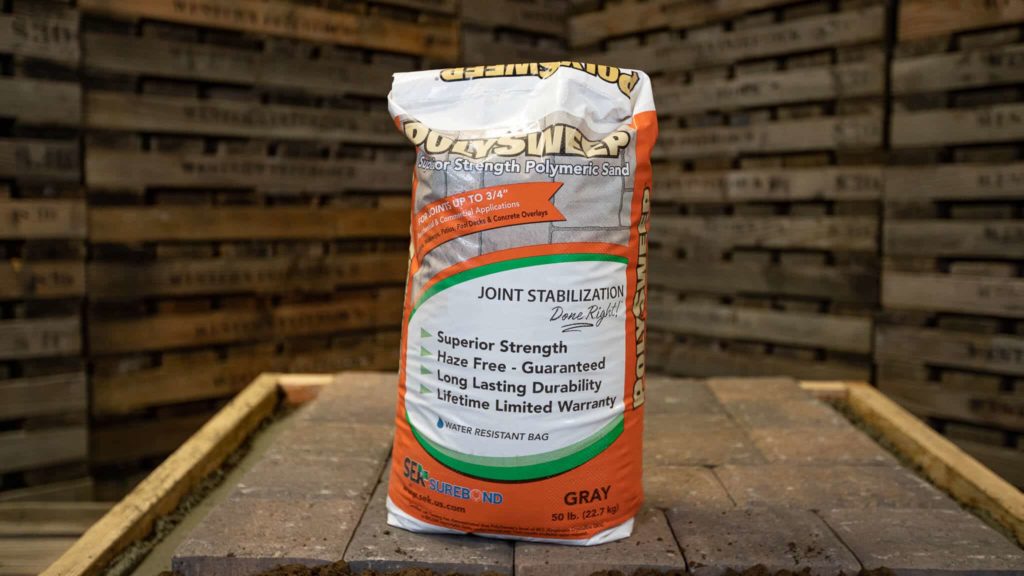
Pro Tip: It’s crucial that this is done properly or else it will mess up the pavers. Learn how to install polymeric sand in our DIY Tutorial, How to Use Polymeric Sand When Installing Pavers.
Which sand should I use?
If you are looking for a product to use in between your paver joints that will be instrumental in taming the weed population, polymeric sand is probably best for you. It is strong and flexible and will resist the plant pests that frequently raise their heads here in the Pacific Northwest.
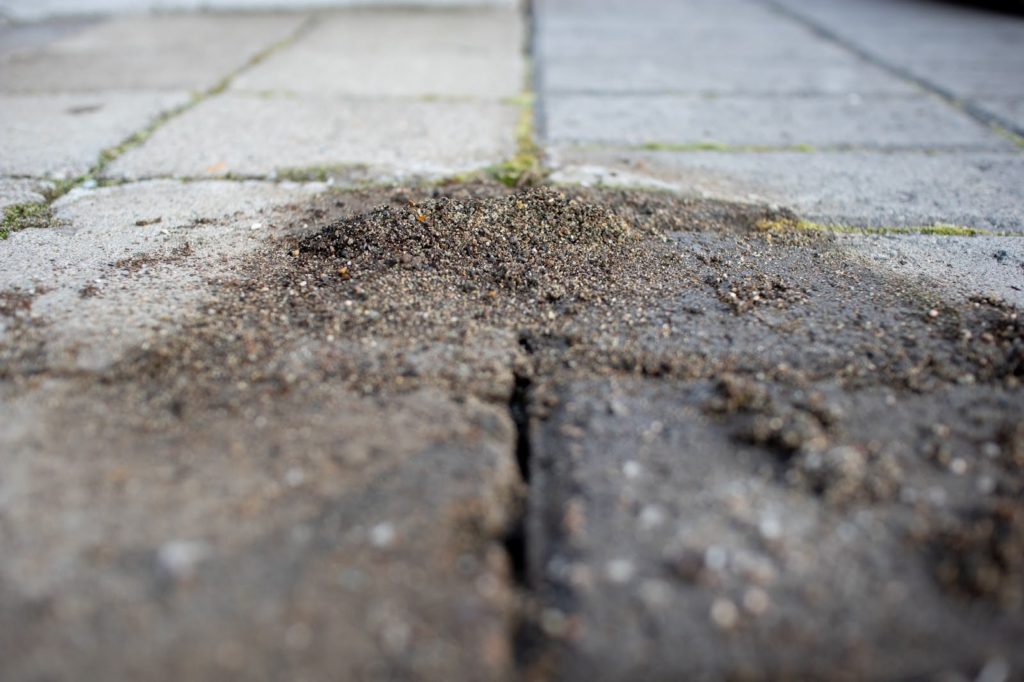
One small downside of sweeping sand is that it can potentially blow away or get washed away from extreme weather over a long period of time, causing it to lose its interlock. However, it is very simple to refill the joints with more sand, and the time it saves to use sweeping sand makes the product ideal and necessary for large projects such as a long lane or circle driveway.
Check out our training videos
Installing pavers by yourself can initially be intimidating. Would it relieve you to know that it doesn’t have to be? We’ve created a free resource to help empower you to install hardscape on your own—with less expense and less stress.
Sign up for our free How to Install Patio Pavers training video and learn how to easily execute all the steps required for installing pavers in your backyard, driveway, or front patio.
Get our FREE Project Planning Guide
Tell us where to send it and we’ll email the backyard planning guide to you right away!
"*" indicates required fields



